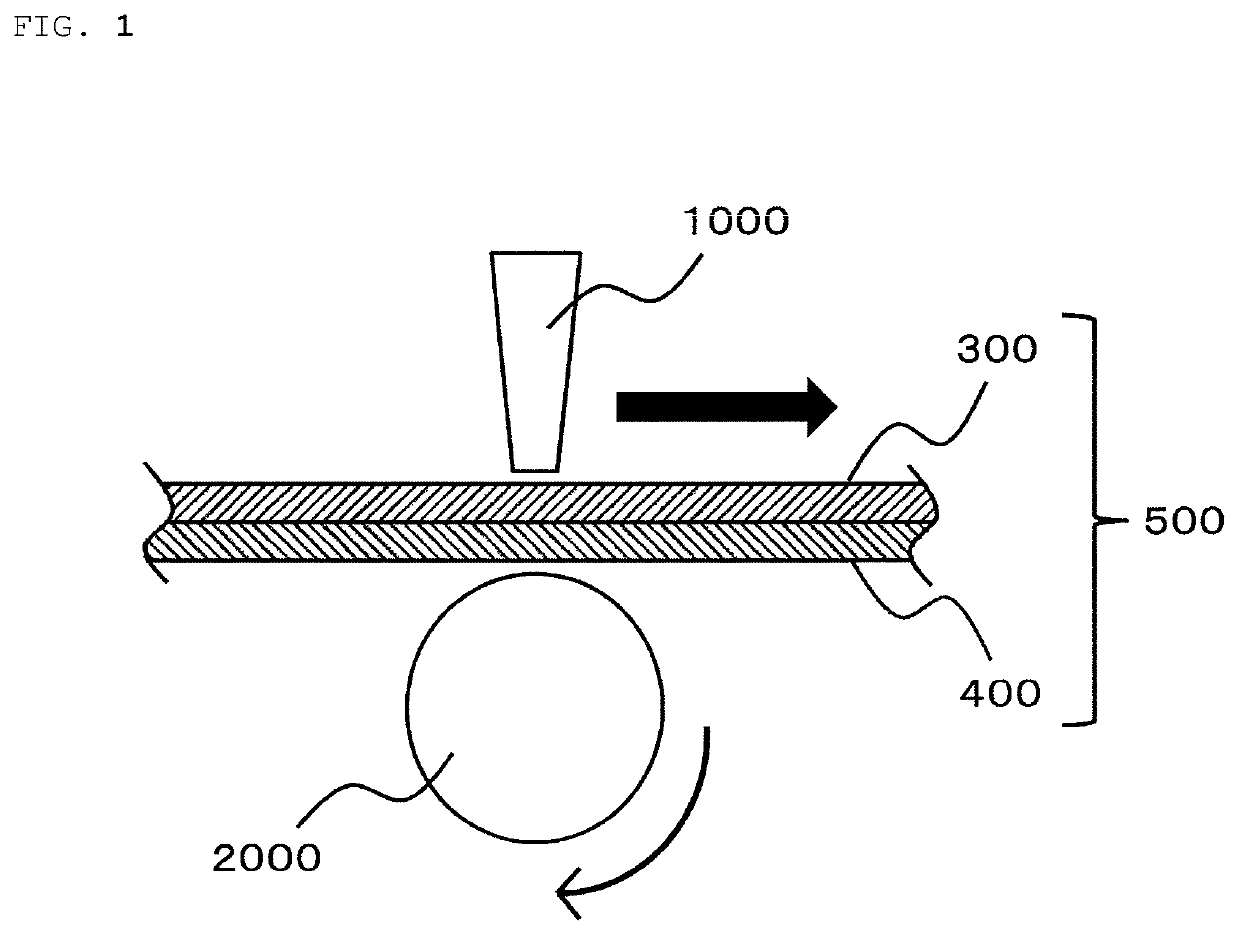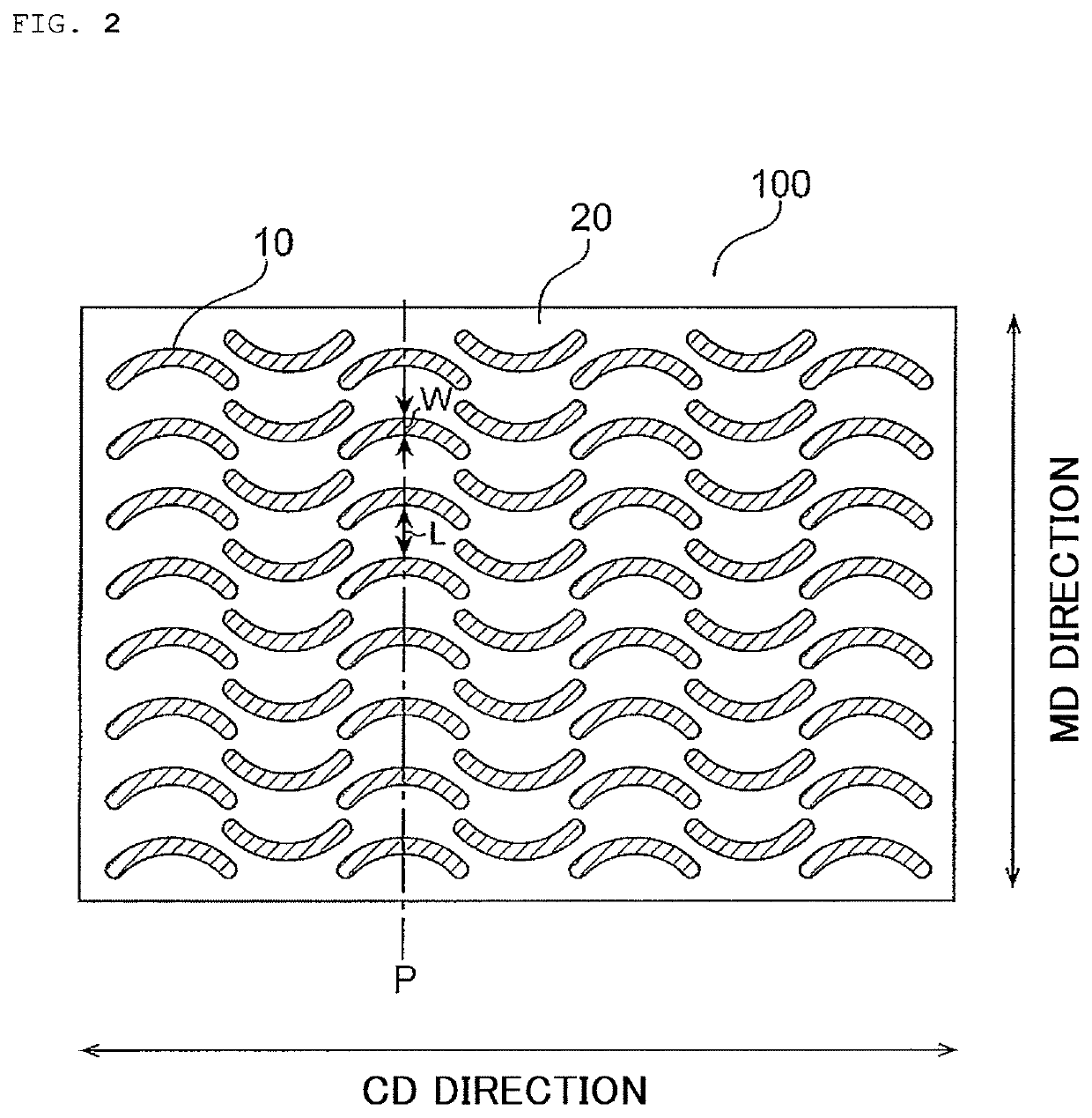Method for producing layered article
a technology of layered articles and layered products, which is applied in the direction of layered products, other domestic articles, chemistry apparatus and processes, etc., can solve the problems the production speed of layered articles is not increased, and achieve the reduction of variation in product quality, the effect of suppressing the variation in fusion strength and sufficient production speed
- Summary
- Abstract
- Description
- Claims
- Application Information
AI Technical Summary
Benefits of technology
Problems solved by technology
Method used
Image
Examples
examples
[0113]The present invention is hereinafter specifically described by way of Examples. However, the present invention is by no means limited to these Examples. In Examples and the like, test and evaluation methods are as described below. In addition, “part(s)” means “part(s) by weight” and “%” means “wt o” unless otherwise stated.
[0114]Through the use of a digital microscope “VHX-1000” manufactured by Keyence Corporation, a non-woven fabric surface was photographed at a magnification of 500, and fiber diameters were measured for N=5 or more with the image analysis software of the digital microscope. The average value of the measured fiber diameters was defined as a fiber diameter.
[0115]An obtained layered article was cut into a size measuring 30 cm (MD direction) by 20 cm (TD direction), and the number of holes each having a diameter of 300 μm or more present in a fused portion was counted.
[0116]An obtained layered article was cut into a size measuring 2.5 cm (MD direction) by 10 cm ...
examples 1 to 7
[0119]Raw non-woven fabrics shown in Table 1 were laminated, and were subjected to embossing treatment with an embossed pattern roll at a temperature shown in Table 1 and an ultrasonic continuous fusion apparatus manufactured by Herrmann Ultrasonics (frequency: 20 kHz, pressing force: 900 N) to provide layered articles.
[0120]The embossed pattern used was the embossed pattern of an arc shape illustrated in FIG. 2, and the embossment width was 0.8 mm, the maximum value of the distance between two adjacent embossments on a line in the MD direction (maximum embossment-to-embossment distance) was 3.2 mm, and the embossing-fused area ratio was 23%.
[0121]The results are shown in Table 1.
example 8
[0122]Layered article production was performed in the same manner as in Example 6 except that in Example 6, the temperature of the embossed pattern roll was set to 70° C., the pressing force was set to 850 N, and the speed was set to 100 m / min.
[0123]The results are shown in Table 1.
PUM
| Property | Measurement | Unit |
|---|---|---|
| diameter | aaaaa | aaaaa |
| pressing force | aaaaa | aaaaa |
| temperature | aaaaa | aaaaa |
Abstract
Description
Claims
Application Information
 Login to View More
Login to View More - R&D
- Intellectual Property
- Life Sciences
- Materials
- Tech Scout
- Unparalleled Data Quality
- Higher Quality Content
- 60% Fewer Hallucinations
Browse by: Latest US Patents, China's latest patents, Technical Efficacy Thesaurus, Application Domain, Technology Topic, Popular Technical Reports.
© 2025 PatSnap. All rights reserved.Legal|Privacy policy|Modern Slavery Act Transparency Statement|Sitemap|About US| Contact US: help@patsnap.com


